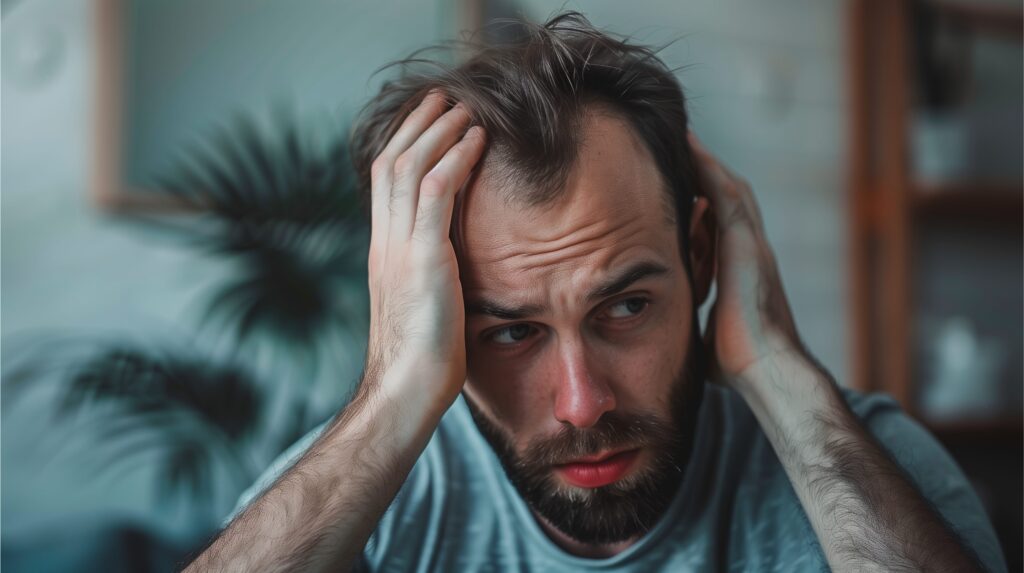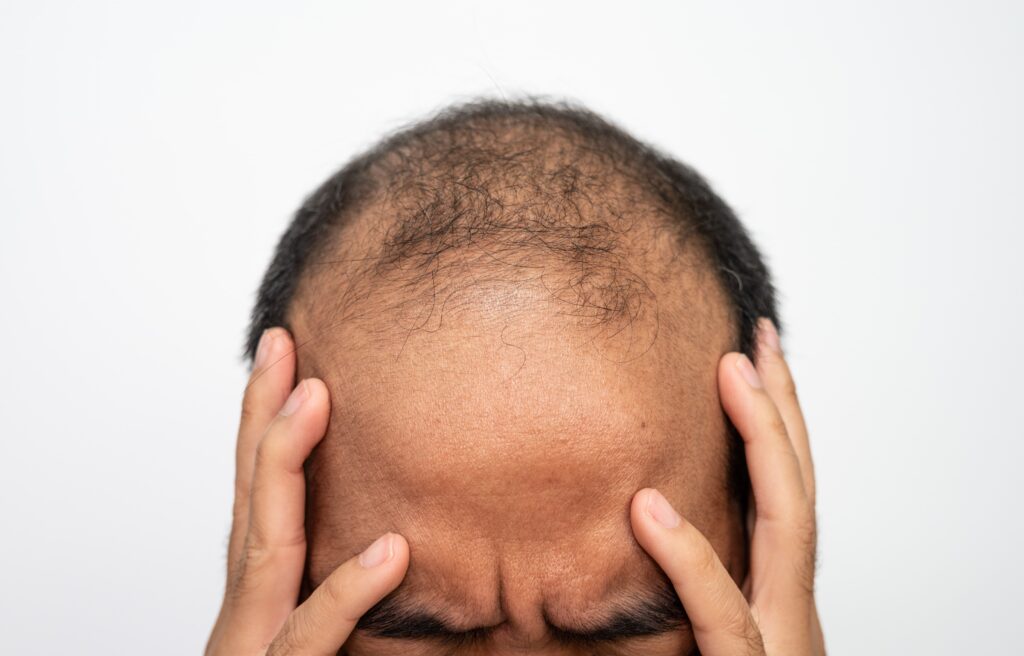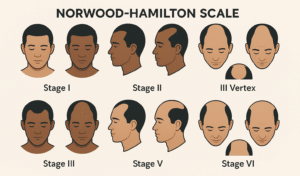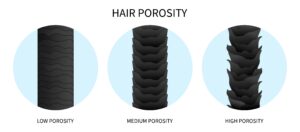Not just genetics drive hair to fall out. How you look after yourself, including your stress management, can be just as important to stopping hair thinning or loss. Of course, every case of hair loss is different, but there is a proven link between excessive stress and hair loss.
Excessive stress can push large numbers of your hair follicles into a “resting phase”, in which they stop producing new hairs and hair stops growing. The name of this condition is telogen effluvium. In some extreme cases, severe stress levels can cause the body’s immune system to attack its own hair follicles, a condition called alopecia areata.
What happens to your body when you are stressed?

Not all stress results in hair loss. Indeed, there are different types of stress, and the right sort of stress can even be good for you. Scientists have shown that this sort of stress – known as eustress – can improve your performance, motivate you to achieve, and even improve your physical health and lengthen your life.
On the other hand, negative stress – distress – can have disastrous effects on your health. Emotional stress, psychological stress, or long-lasting (chronic) stress might overwhelm individuals or remain unresolved.
Distress is the problem.
When stress hits, your body releases hormones like cortisol and adrenaline into your bloodstream. These hormones help in the short term but damage your body’s essential systems and hair growth over time. In a study, researchers at Harvard have found that a stress hormone impairs hair follicle stem cells necessary for hair growth. Excessive stress causes your body to continuously produce hormones, leading to fatigue, depletion, and eventually exhaustion.
Why does stress make your hair fall out?
Most people have roughly 100,000 hair follicles on their scalp. Each follicle alternates between the growth (anagen) phase and the rest (telogen) phase.
If you have a full head of hair, many more of your hair follicles are in the anagen phase than the telogen phase, so it is not noticeable that some of them are taking a break. When a hair follicle switches from growth to rest, from anagen to telogen, the hair falls out. This is a normal part of the hair growth cycle.
However, what happens if you experience a sudden episode of intense emotional or psychological stress? The body releases the hormone cortisol, and the hair follicles switch from the growth to the rest phase. The consequence of this stress episode is often hair loss.
How long does stress induced hair thinning take, and what does it look like?
The stress that makes your hair fall out can be sudden, or it can be longer-term. However, if you experience a traumatic event, your hair will not thin or fall out straight away. The hair loss will not usually happen until about three months down the line.
Why is this? Hair follicles react slowly, so although they may enter the telogen phase too early, the hair cycle phase change takes about three months. The hair only sheds at the end of the cycle.
Stress-related hair loss spreads out over the scalp. Telogen effluvium can lead to 50% hair loss. The hairs fall out from all over the scalp – complete baldness is not usually a symptom. Strands of hair falling out in patches can be a symptom of a serious attack of alopecia areata, where extreme stress leads to the immune system attacking the hair follicles.
Will hair lost to stress-related conditions grow back?

Usually stress induced hair loss grows back, especially if stress levels return to more manageable levels. However, this can often be a slow process, as it takes time for the hair follicles to get back into the regular hair cycle and to grow back to usual thickness. Just as it takes time for the follicles to go from the anagen to the telogen stage, the reverse is true.
Unfortunately, the recovery is not always complete. Sometimes the hair never regains its original density. Often, stress related hair thinning reveals other types of hair loss. Older people usually have naturally thinner hair, so this can result in weaker hair growth after hair loss.
What can you do about it?
How people manage stress is extremely individual. Some people find that sport is effective at improving their wellbeing, while others use meditation.
If you find that you are stressed, try experimenting with activities or mental techniques which help you to relax. There is also no shame in getting professional help, particularly if you are under long-term stress that is not easy to solve.
If hair loss has already happened, and after around six months the hair growth is still not back to normal, one option may be a hair transplant. In this situation, an explanation is needed as to why the hair is not returning.
You should get professional advice. For this, Dr. Acar and his experienced team at Cosmedica clinic stand ready to offer you a wealth of expertise and support with a free consultation.
FAQ
Excessive stress can induce a significant number of hair follicles to enter a “resting phase” referred to as telogen effluvium, thereby halting new hair production and leading to hair loss. In extreme cases, severe stress may provoke an immune response that attacks hair follicles, resulting in alopecia areata.
Distress triggers the release of hormones such as cortisol and adrenaline into the bloodstream. While beneficial in the short term, prolonged exposure can deplete bodily resources, ultimately impairing essential physiological functions and contributing to hair loss. This is in contrast to “eustress,” which can enhance health and performance.
Stress-induced hair thinning generally manifests approximately three months following a significant stress event due to the delayed response of hair follicles. Hair loss from telogen effluvium is typically diffuse across the scalp, whereas alopecia areata can cause localized patchy hair loss.
Usually, hair grows again if stress levels stabilize, although the process may be gradual. Complete recovery is not assured, as stress-related thinning may reveal underlying hair loss conditions. In older individuals, regrowth may be less robust.
Stress management strategies are highly individualized and may include activities such as exercise or meditation. For persistent stress, professional intervention may be warranted. If hair loss continues beyond six months, a hair transplant might be considered. Consulting with experts like Dr. Acar at Cosmedica Clinic for a comprehensive evaluation is advisable.




